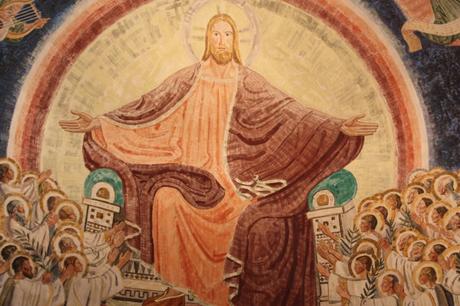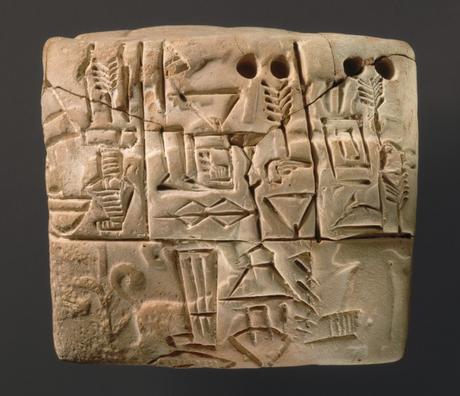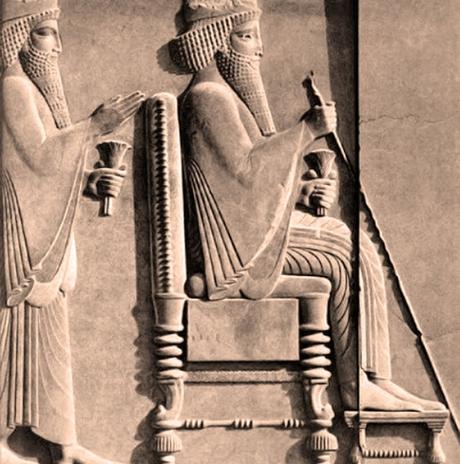Grace Thoughts
Crowns and Thrones: The Majesty of Our God (Part Three)

Our new series is called Crowns and Thrones: The Majesty of Our God. As we mentioned in the last study, the Hebrew patriarch Jacob was the first to mention a crown in the Bible and it referred to the one worn by his son, Joseph. Joseph was second in command to an Egyptian pharaoh. The first person in the Bible who mentioned a throne was the Egyptian pharaoh who elevated Joseph to a position of political and civil authority.
Egypt is a very old civilization, but it is not the oldest. The Bible addresses older civilizations from both Pre-Flood and Post-Flood eras. So, what is the history of crowns and thrones?
History of Crowns and Thrones
We don’t see any crowns or thrones mentioned in Pre-Flood years (Genesis 1 – 7). However, something happened after the Flood.
Cush begot Nimrod; he began to be a mighty one on the earth. He was a mighty hunter before the Lord; therefore it is said, ‘Like Nimrod the mighty hunter before the Lord.’ And the beginning of his kingdom was Babel, Erech, Accad, and Calneh, in the land of Shinar. From that land he went to Assyria and built Nineveh, Rehoboth Ir, Calah, and Resen between Nineveh and Calah (that is the principal city).
Genesis 10:8-12
This is the first time the word kingdom is mentioned in the Bible and it’s attached to a man – Nimrod. I wrote extensively about Nimrod in my 777-page book titled A History of Man’s Quest for Immortality (Fifth State Publishing, 2007) for good reason. He established the first kingdom and was the planet’s first king.
The Hebrew word for kingdom in Genesis 10:10 is מַמְלָכָה (mamlaḵtōw). The word means “dominion, reign, sovereignty, kingdom” and comes from מֶלֶךְ – which means “king.” Nimrod built the first kingdom as a king.
The kingdom King Nimrod built was located across a large part of the early post-Flood world –
- Babel
- Erech
- Accad
- Calneh, in the land of Shinar
- From that land he went to Assyria and built Nineveh
- Rehoboth Ir
- Calah
- Resen between Nineveh and Calah (that is the principal city)
This is an amazing list! One man built a kingdom that covered much of what we know as the beginning of earthly civilizations (e.g. Mesopotamia, Cradle of Civilization). How could one man do that?
One reason is that Nimrod was “a mighty one on the earth.” The words mighty one come from the Hebrew גִּבֹּ֖ר (gibbōr) which means “champion, hero, strong, warrior.” That goes along with the next description about Nimrod – “He was a mighty hunter.” Nimrod was a powerful warrior and mighty hunter, which is how many people became kings in following centuries. Nimrod used force to build his kingdom. Ancient kings followed Nimrod’s example and used deadly force to build their kingdoms.
Another reason for Nimrod’s success is that he probably lived to be more than 400 years of age. Nimrod was the great-grandson of Noah through the lineage of Ham and Cush. Based on what we read in Genesis 11, another of Noah’s great-grandsons lived to be more than 400 years old. His name was Salah and was Nimrod’s cousin. Salah was of the lineage of Shem and Arphaxad.
The lineage of Shem is important for Christians to understand because God chose to bring Jesus into the world through that lineage. Shem’s descendants included Abraham, Isaac, Jacob, Joseph, Moses, David and Jesus.
Noah prophesied concerning his sons and their families soon after the Flood. Notice the importance of Shem in the prophecy –
Cursed be Canaan; A servant of servants He shall be to his brethren.’ And he said: ‘Blessed be the Lord, The God of Shem, And may Canaan be his servant. May God enlarge Japheth, And may he dwell in the tents of Shem; And may Canaan be his servant.
Genesis 9:25-27
Shem is described in the Bible as “the father of all the children of Eber” (Genesis 10:21). Eber was one of Shem’s great-grandsons, so why mention him in the description about Shem? It’s important in Bible study to observe everything, ask questions about what you see and seek God’s guidance for the right answers. I think the reason Eber is mentioned at the beginning of the description of the lineage of Shem is because something very important happened through Eber that would change the world forever.
To Eber were born two sons: the name of one was Peleg, for in his days the earth was divided.
Genesis 10:25
The Hebrew word for divided is נִפְלְגָ֣ה (nip̄ləḡāh) and means “split, cleft, divided.” What was split? The earth (הָאָ֔רֶץ – hā’āreṣ .. land, earth). What event do we find in the Bible that would have been a dividing/splitting of the land/earth?
Just a few verses later we read this about the people of the earth –
Now the whole earth had one language and one speech.
Genesis 11:1
Noah and his family had one language and one speech after the Flood. It’s interesting that the Bible used two words to describe the people – one language and one speech. Why not just say they spoke the same language?
The word language in Hebrew is שָׂפָ֣ה (śāp̄āh) which means “lip, edge, speech.” The word speech in Hebrew is וּדְבָרִ֖ים (ūḏəḇārîm) which means “word, speak.” Some Hebrew scholars explain it as “one lip and kind of words.” (Keil and Delitzsch Biblical Commentary on the Old Testament)
When did that change? When God divided the earth by confusing the language of Noah’s family.
But the Lord came down to see the city and the tower which the sons of men had built. And the Lord said, ‘Indeed the people are one and they all have one language, and this is what they begin to do; now nothing that they propose to do will be withheld from them. Come, let Us go down and there confuse their language, that they may not understand one another’s speech.’ So the Lord scattered them abroad from there over the face of all the earth, and they ceased building the city. Therefore its name is called Babel, because there the Lord confused the language of all the earth; and from there the Lord scattered them abroad over the face of all the earth.
Genesis 11:5-9
God confused the language of all the earth and scattered the families of Noah abroad over the face of all the earth. The early settlements and cities of the ancient world began as those families scattered and started new lives with their new languages and identities. You can read more where those families traveled in our book, but our emphasis for this article is about the first person to become a king on earth – Nimrod.
Based on the information we have in Genesis 10 and 11, we believe that Nimrod was involved in building the Tower of Babel. The fact that he was a powerful leader in Noah’s family who had the skills of a hunter and a desire to dominate others may point to his being a ring leader in building the tower. That might explain why Nimrod remained in Babel after God confused the languages. Nimrod had started building his kingdom in Babel and that’s where he stayed. Babel would have been Nimrod’s capital as he expanded his kingdom across the land (e.g. Mesopotamia).
So, did King Nimrod wear a crown and sit on a throne? Probably. That would have set him apart from other members of Noah’s family who were scattered after God confused the language of people at the Tower of Babel (Genesis 11:1-9). Families scattered from each other and went in many directions establishing homelands in places that would later be known as Egypt, Ethiopia, Iran, India China, and many other nations of the world. Many of them would go on to build towers (הַמִּגְדָּ֑ל – hammiḡdāl) similar to the one at Babel and set up city-state kingdoms, but Nimrod was the first.
The beginning of Nimrod’s kingdom was Babel, Erech, Accad, and Calneh, in the land of Shinar. The land of Shinar covered the southern part of Mesopotamia. After building cities in the south, Nimrod moved north and built cities in the northern part of Mesopotamia known as Assyria. Given his skills, desire to dominate and how long he lived, Nimrod could have accomplished what the Bible says he did.
Here’s a map of Nimrod’s kingdom from Bible History Online.
 Courtesy: Bible History Online
Courtesy: Bible History Online
Nimrod’s kingdom probably began in the late part of the 4th millennium or very early part of the 3rd millennium based on many archaeological findings. Below is a Sumerian cuneiform tablet from around the time of Nimrod’s rule –
 Sumerian cuneiform tablet, probably from Erech (Uruk), Mesopotamia, c. 3100–2900 BCE; in the Metropolitan Museum of Art, New York City.
Sumerian cuneiform tablet, probably from Erech (Uruk), Mesopotamia, c. 3100–2900 BCE; in the Metropolitan Museum of Art, New York City.
It’s interesting that some of the area was still called the land of Nimrod as late as the middle of the 1st millennium –
They shall waste with the sword the land of Assyria, And the land of Nimrod at its entrances; Thus He shall deliver us from the Assyrian, When he comes into our land And when he treads within our borders.
Micah 5:6
Nimrod was a powerful first king who left a lasting legacy.
Nimrod’s Legacy
Though the Bible is specific about the extent of Nimrod’s kingdom, it doesn’t include information about Nimrod’s family (e.g. children, grandchildren, etc). What we know about Nimrod’s legacy comes from archaeological discoveries found in the various city-states that made up Nimrod’s kingdom.
The next king we know by name in Mesopotamia is King Etana. He ruled in the early part of the 3rd millennium and may have been a descendant of Nimrod. Other kings of the region who followed Nimrod (according to ancient king lists) include Meskiaggasher, Enmerkar, Lugalbanda, Dumuzli, Gilgamesh, Lugalzagesi, and Sargon. Many of the archaeological finds from the region show kings wearing crowns and sitting on thrones.
 Courtesy: History On The Net
Courtesy: History On The Net
Another important aspect of the early kings was their connection to the supernatural. We see that in the attempt of Noah’s family to build city and a tower “whose top is in the heavens” (Genesis 11:4). We know that Nimrod led a rebellion against God and that the earliest mention of gods is found in the city-states he built as part of his kingdom.
Some of the early gods of Mesopotamia included –
- Adad
- Dagon
- An (Anu)
- Ea (Enki)
- Nabu
- Marduk
- Nergal
- Enlil
- Ninurta
- Nanna (Sin)
- Shamash (Utu)
- Ashur
- Gibil
We meet several of these gods in the Bible. All of them were false gods based on idol worship. Many of the early kings even saw themselves as gods.
Next Time
In the next part of our study about Crowns and Thrones: The Majesty of Our God, we’ll look at the development of kings, crowns and thrones in the Bible.
Scripture taken from the New King James Version®. Copyright © 1982 by Thomas Nelson. Used by permission. All rights reserved.
GraceLife © 1990-2021
 Ancient KingsCrowns and ThronesMesopotamiaNimrodNoahSumerian Empire
Ancient KingsCrowns and ThronesMesopotamiaNimrodNoahSumerian Empire

Published by gracelifethoughts
Founder & Director of GraceLife Ministries View all posts by gracelifethoughts
